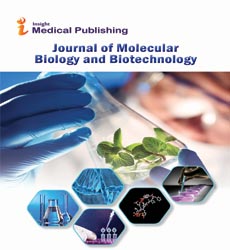Antibiotic Resistance Patterns of Pathogens Isolated from Clinical Specimens in Sana'a Capital City: A One Year Retrospective Study from 2019 to 2020
Abstract
Background :Antimicrobial resistance(AMR) is one of the most a serious global public health threats and the major clinical microbiological problem affecting the hospitalized and non-hospitalized patients throughout the world and is particularly affecting developing countries including Yemen, where infectious diseases and poverty are endemic and no legislation for antimicrobial uses. The effectiveness of currently available antimicrobials is decreasing as a result of increasing resistant strains among clinical isolates. Information on the type of common circulating pathogens with their AMR patterns in a given area is essential for optimal patient care. Objectives The aim of this study was to determine the resistance pattern of bacterial and fungal isolates from different clinical specimens at one major hospital and two laboratories( one governing and another privet) in the in Sana'a Capital City. Methods: A retrospective study was conducted in one major hospital laboratory and two laboratories (one governing and another privet) in the Sana'a Capital City from January 2019 to January 2020. All culture and antimicrobial susceptibility test by disc diffusion method results of patients who presented at each of the laboratories for Urine , pus from( deep and surface wounds) Urogenital ( Urethral discharge, HVS, Seminal fluid , vaginal and cervical swabs),),(Ear, Nasal ,throat &mouth swabs) ,CSF, Body fluids and stool . Data were analyzed using SPSS Windows version 20.0. The comparisons between different isolates’ resistance to antimicrobials were performed using the chi-square test. Results: A total of 3695 pathogenic isolates were obtained from common clinical specimens such as urine 1254(34%) , genital 408 (11%), pus 444( 11%), sputum 245(6.9%), ear swabs 214(6.5 %),blood 128( 3.5%),stool 80(3.3%)CSF 49(1.3%)and .....). Of total 1759 (47.6%) isolated Gram positive bacteria the predominant isolates was Staphylococcus aureus 933 (25.3%) however ,of total Gram negative bacteria the predominant isolates were Escherichia coli 892 (25.3%) and 233 (6.3%) and of fungi isolates were Candida albicans 233 (6.3%) .The most of bacterial isolates showed significantly high resistance rates to amoxicillin/clavulanic acid [653/ 791] (82.6% ) followed by Ceftxime/ Calvulanic acid [287 /365](78.6%) and Tobramycin [336/443](75.8%). Moreover, the lowest resistance rates observed to Vancomycin [104/1397](7.4%). The most of to Candida albicans isolates showed significantly high resistance rates to Amphotericin B [134/233](57.5%) followed by Ketoconazole [122/233](52.4%) and Voriconazole [100/233](42.9%). the lowest resistance rates observed to Flucytosine [61/233](26.1%). Conclusion : Our findings showed a high resistance rates of antimicrobial resistance in bacterial and fungal isolates. Thus, uncontrolled and irrational use or prescription of these drugs should be avoided to maintain low resistance of highly susceptible antimicrobials. Recommendations : To prevent the spread of the resistant bacteria and fungi , it is critically important to have strict antibiotic policies. The surveillance programmes for multidrug resistant organisms and infection control procedures need to be implemented properly .
Open Access Journals
- Aquaculture & Veterinary Science
- Chemistry & Chemical Sciences
- Clinical Sciences
- Engineering
- General Science
- Genetics & Molecular Biology
- Health Care & Nursing
- Immunology & Microbiology
- Materials Science
- Mathematics & Physics
- Medical Sciences
- Neurology & Psychiatry
- Oncology & Cancer Science
- Pharmaceutical Sciences
